
Dog owners are used to hearing their pup growl from time to time, but did you know that it’s not uncommon for cats to growl as well?
Cats use a broad range of vocal sounds directed at members of their own species and also humans to convey their emotions and intent. The sounds a cat makes are split into three forms of verbal communication: vowel sounds, murmur sounds, and hostile calls.
Although it can be tricky to translate all the sounds your kitty makes, cat growling is typically indicative of a hostile sound associated with fear or anxiety, aggression, frustration, and/or pain.
Let’s decode how cat growling sounds, it’s communicative meaning, and the best way to behave when faced with a growling feline.
What Is Cat Growling?
Cat growling is a “strained-intensity” sound produced with the mouth open that usually communicates a negative emotion. The mouth usually isn’t as wide open during growling as with other strained intensity sounds like snarling, yowling, or howling. Cat growling may also be dispersed with hissing.
Feline growling is used in offensive and defensive interactions, among cats and toward people and other pets.
How Does Cat Growling Sound?
Susanne Schötz from Lund University defines the growl sound as rasping, harsh, frequently and quickly pulse-modulated, low pitched (100 to 225 hertz) of typically long duration. It’s produced through a slow exhalation as the mouth is kept slightly open.
The duration of the growling sound and intensity shift can express variations within the motivation of the cat while making the growling vocalization. Usually, growling is either intermingled with howling, hissing, moaning, and yowling or a transitional vocalization between a growl and a howl.
Growls throughout a fight may vary between 400 and 800 hertz (Houpt, 2004).
Why Do Cats Growl?
1. A Warning Sign to Back Off
The growl can signify a warning to back off! Hissing and growling are usually indicative of your cat’s negative feeling, which might be triggered by anxiety from a stranger entering your home, annoyance with a certain situation, or fear from insecurity.
Pay close attention to your cat’s warning signs—tense body, twitching tail, growling, piloerection (hair standing up), ears pinned back—before it escalates into aggression.
2. Territorial Protection of Their Core Area
Cats are particularly territorial. Territories are vigorously guarded with offensive and hostile behaviors displayed toward trespassers in order to protect the resources within. This is communicated through strained intensity vocalizations like growling, hissing, and yowling, as well as scratching and biting, especially if the cat is unable to avoid the situation or person and flee to a safe place.
Unknown, free roaming male cats also aggressively protect their territory from competing males to thwart reproductive approach to females.
3. Food Guarding
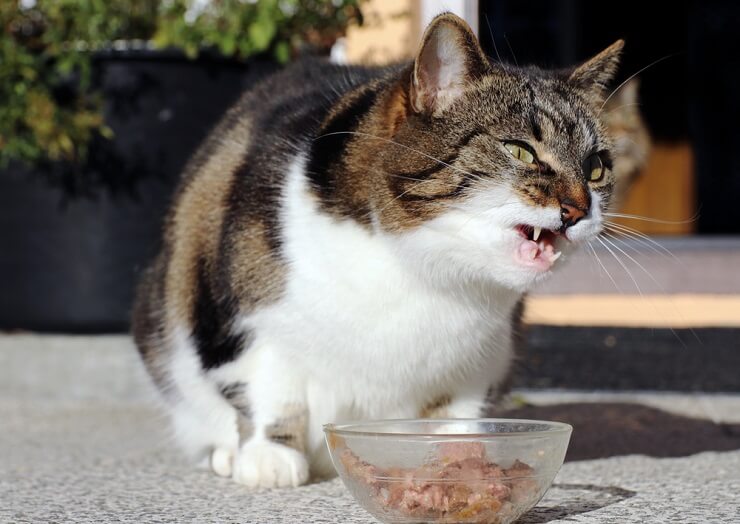
A cat that is growling while eating or close to the food bowl may be resource guarding.
Certain cats make growling-like noises when eating, warning others to not attempt to steal their food similarly to dogs. Although the precise meaning of this is unknown in felines, it often happens when the value of the food is extremely high, for example when eating fresh meat or high-value treats.
Minimize conflict in multi-cat households by providing sufficient resources for every individual and not feeding meals in close proximity to one another.
4. Invasion of a Feline Intruder
Cats living in groups usually display amicable behaviors toward each other. However, feline intruders (new cat within a household, those unlawfully accessing gardens and courtyards) which are non-group members are typically treated hostilely through agonistic vocalizations and body language like growling, hissing, spitting, chasing, and hostile posturing to make themselves appear bigger and fend of intruders.
5. When In Pain
Acute or chronic pain can cause a feline to growl or hiss on approach. Likewise, a feline may grunt when touched on a wound or aching area.
Since cats are masters of disguise and generally hide any signs of discomfort, look out for the other signs of illness or distress: loss of appetite, inactivity, sleeping more, increased vocalization, decreased grooming, litter box aversion, and changes in social contact with caregivers.
Medical conditions like osteoarthritis, dental disease, trauma, infections, and thyroid dysfunction may cause a cat to growl.
6. Your Cat Feels Frightened or Anxious
Another reason cats growl is out of fear or anxiety.
A cat that had no socialization or inadequate socialization, or experienced aversive encounters with people during kittenhood may confronted with social interaction without the ability to avoid the situation or escape may behave aggressively by hissing, growling, swiping, or biting in an attempt of self-defense. A particularly fearful cat is likely to find physical contact with humans aversive instead of positive, so interactions with such cats should be supervised by a professional and kept as minimal as possible to avoid “flooding” (prolonged exposure to high intensity fear).
Introducing a new kitten or adult cat to the household, or leaving your cat in an unfamiliar environment like a vet clinic or boarding facility, can induce a fear/anxiety response causing your cat to act aggressively by growling, hissing, and spitting at the carer or at another pet.
The cat in the following video growls when placed in a new setting.
7. Due to Frustration
Lastly, a cat may growl due to frustration. Frustration usually occurs when a feline is unable to gain instant access to something it wants or when it can’t prevent its personal or territorial space from being raided. One example is when a cat is locked indoors and sees another cat in the garden or through a window.
To minimize redirected aggression often caused by frustration, develop a predictable routine and provide cognitive enrichment to enhance your cat’s well-being.
How Should You React to a Cat Growling?
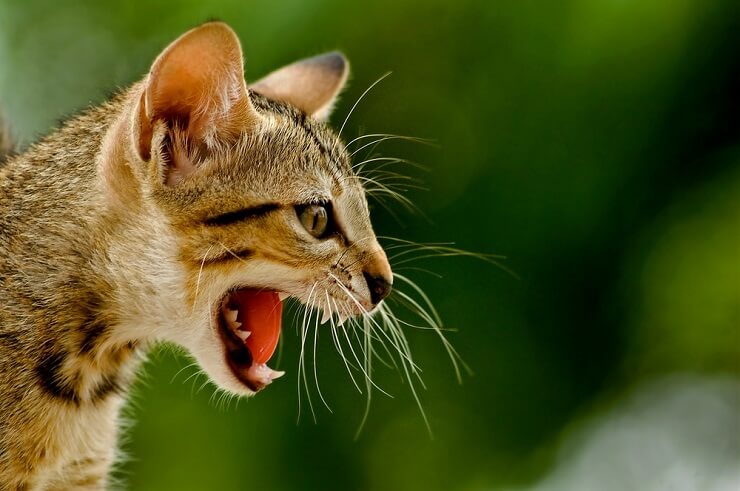
Pay attention to what’s going on around your cat when it is growling and take steps to address whatever is upsetting the cat.
Be observant and listen to your cat when it is communicating some kind of dislike or annoyance.
If the cat is growling at you or at a stranger, quietly step away and stop pursuing any contact until the cat returns to normal calming state. Alternatively, move slowly to an area that is distant from the kitty.
Usually, a cat will be hesitant to attack the person unless the cat feels there’s no other option, especially if the individual continues to approach or participate in contact.
Importantly, avoid yelling or punishing your cat since it may exacerbate the fear/anxiety response, which can worsen or reinforce the aggression.
If the growling is directed toward another cat or dog, separate both pets and resume the re-introduction process after your cat is fully calm.
Your cat’s vocalization and body language can tell you plenty about their state of mind. Whenever possible, try to identify the reason behind the growling.
If your cat suddenly starts growling or the growling intensifies in severity, arrange a veterinary health check as soon as possible.
With patience, understanding, and compassion, your cat will return to a relaxed, loving, and snuggly kitty.
Frequently Asked Questions
What does it mean when a cat growls?
Growling can mean your cat feels insecure or frightened of someone or a particular situation. Growling can also indicate your cat feels frustrated, distressed, threatened ,or may even be in pain.
Is it normal for a cat to growl?
It’s normal for a cat to growl since that’s how felines articulate their emotions. Generally, growling is a warning sign to back down before it escalates into aggression.
What does it mean when a cat makes a low growl?
The low-pitched growl is often used to express an aggressive motivation. It’s usually a combative signal used to warn and intimidate another cat coming too close.
What to do if your cat growls at you?
The best thing you can do when your cat growls at you is avoid staring at the cat (staring is threatening to a cat), speak quietly, remain calm, and move away. Ultimately, stop engaging in an interaction with the cat, leave the room, and speak softly to other household members until the cat calms down.
-
Care, I. C. (2020, September 01). Advanced Feline Behaviour for Vet Professionals Module 2 Senses and communication. UK. Retrieved April 29, 2022
-
Care, I. C. (2020, Septmeber 15). Advanced Feline Behaviour for Vet Professionals, Module 4 What do I feel and am I Ok? (ISFM, Compiler) UK. Retrieved April 30, 2022
-
Care, I. C. (2020, September 01). Module 5 Creating a cat friendly home. International Cat Care Advanced Feline Behaviour for Vet Professionals. UK. Retrieved April 28, 2022
-
Chloé Tavernier, S. A. (January 2020). Feline vocal communication. Journal of Veterinary Science, 18-21. Retrieved May 01, 2022, from https://www.ncbi.nlm.nih.gov/pmc/articles/PMC7000907/
-
Finka, L. (2014, October 01). Feline behaviour and stress 1: assessing behaviour. (iCatCare, Compiler) UK: ISFM. Retrieved May 02, 2022
-
Heath, I. R. (2016). Feline Behavioral Health and Welfare. St Louis, MO: Elsevier. Retrieved April 30, 2022
-
Isabella Merola, D. S. (n.d.). Behavioural Signs of Pain in Cats: An Expert Consensus. (P. ONE, Compiler) USA. Retrieved May 01, 2022, from https://journals.plos.org/plosone/article?id=10.1371/journal.pone.0150040
-
Sparkes, D. S. (2016). ISFM Guide to Feline Stress and Health; Managing negative emotions to improve feline health and wellbeing. Tisbury, Wiltshire, UK: International Cat Care. Retrieved April 29, 2022
-
Houpt, K (2004). Domestic Animal Behavior for Veterinarians and Animal Scientists, 4th edition. Blackwell Publishing: Ames, IA.

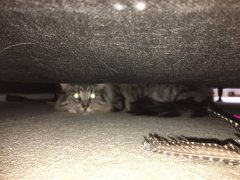
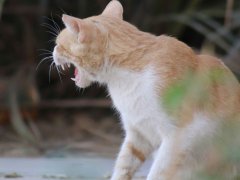


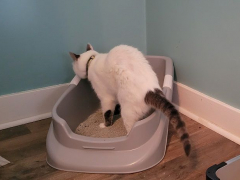


This article provides a comprehensive understanding of why cats growl, covering various reasons from territorial protection to expressing pain or fear. It offers practical advice on how to react to a growling cat, emphasizing the importance of observing their body language and avoiding actions that may escalate the situation.
thank you so very much for your comments. I will do what you suggest. Again, thank you, Susan Clarke
You’re most welcome
I have five cats, the last adopted about a week or so ago. The first cat, usually relaxed and not aggressive, was fine with two kitties and a fourth adult cat. The last cat was also adopted, as were the others, from the Safe Animal Shelter. Number five, the last cat, was markedly underweight. This past week, the newest cat, has gained two lbs. He lives in my closet and is non-confrontational and does not mix with the others. The first cat growls when at the food bowl, and is distancing himself from all the others. I don’t know what to do so that they get along. All the cats are well nourished and are given attention. This last cat has been seen by a vet and, with the exception of being underweight, is not noticeably affectionate but will tolerate being touched and brushed on the top of his head and body and tail. Do you have any suggestions for me?
Hi Susan,
Congratulations on your new adoption.
Your first cat is finding it difficult to accept the newest cat. Hopefully, it’s just a matter of time before it gets used to the new kitty.
It’s essential to maintain a set routine and calmness with the aid of multiple Feliway Friends Diffusers within the home to reduce conflict between existing cats.
Feeding practices – I encourage you to feed your first cat separately from all others and provide your first cat with extra tender love and care. One-on-one interactive playtime, even clicker training, is recommended to keep your cat’s mind stimulated until the introduction process is complete.
If there’s no progress, consult an animal behaviorist to help out.
All the best,
Melina
Hi I’m Christine the cat lady
I do understand about different types of behaviors of cats it seems like you have been moving too fast to get them to know each other and please let me tell you that it doesn’t work like that it takes a lot of time to do things pretty slow you have to realize cats have a lot a sources of being over protective of themselves
And they don’t really trust no humans at all so make sure you do everything slowly for them to get to know each other